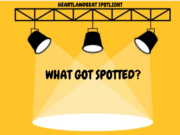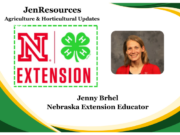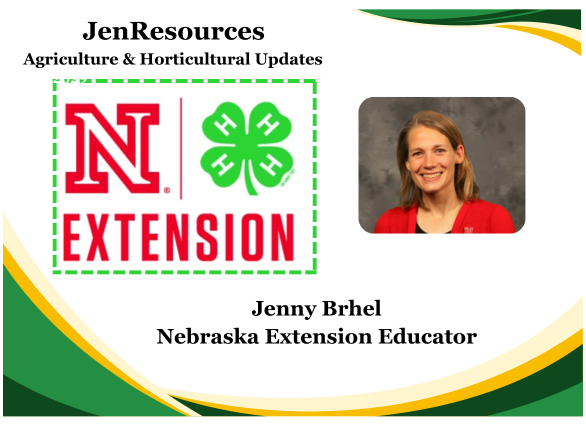Nebraska Extension Blog by Jenny Brhel
The weather and soil temperatures have been incredible for planting progress in this part of the State! The main agronomic question I’ve received the past few weeks has been from those with small grain cover crops around termination timing. We share more details in this article, although decisions are based on individual producers’ goals and the situation in each individual field: https://cropwatch.unl.edu/2021/cover-crop-termination-tradeoffs/.
It’s been a very different spring with small grain and pasture growth. In some ways, it reminds me of 2023, but in others, it seems worse. There was a period of time I was watching small grains, especially in non-irrigated fields, just “set” and not grow. Pastures were doing the same thing. Now in non-irrigated fields, I’m seeing rye that’s fairly short and in boot to heading stage, far earlier than it should be. My biggest concern for non-irrigated fields is soil moisture. It’s a field-by-field assessment, and I recommend that growers dig in fields to have a better idea of soil moisture and depth of moisture. Even for some growers that typically plant green, we’ve made the call to terminate prior to planting or at planting to conserve what moisture we can.
For the irrigated fields, the rye is also maturing quicker than expected, and for some, has gotten taller than they had desired before planting. For those who were planning on planting soybeans green into the rye, I’m not concerned about the rye “getting too tall”. You will observe the soybeans “stretching” for sunlight once they emerge. There will be a longer distance between the soil surface and the cotyledons and also the first unifoliates compared to if they were planted without a small grain. My concerns would be:
- Ensuring the soybean is planted into even moisture or able to be irrigated after planting. If you’re concerned about soil moisture and won’t get beans planted this week, you can always terminate before planting.
- The seed vee is closed if a PRE herbicide is applied. Sometimes I’ve seen difficulty in getting the seed vee closed and if that’s the case, avoid a PRE herbicide to avoid injury to the seed/germinating seedlings. Often I don’t recommend a PRE herbicide when planting green due to the tradeoff in cost between the PRE and the cost of cover crop seed and seeding. But for those who still want to use one, it’s important to ensure that seed vee is closed.
- For both corn and soybean, be aware that the taller the rye gets, the greater the Carbon:Nitrogen ratio becomes. This ratio impacts nutrient tie-up and results in longer break-down time of the small grain. For corn, it’s important to add nitrogen in some way during planting to help offset the nutrient tie-up early on in that seedling’s life. For both corn and beans, sulfur is also tied up. Purdue University found adding 20 lbs of sulfur anytime from pre-plant to V3 resulted in a yield increase. Oh, and when planting green with taller rye, we’ve found it helpful to not use residue removers.
Alfalfa Weevils: I’ve also been noticing alfalfa weevils at low incidence in alfalfa fields thus far, and recommend scouting your fields. Cut 10 stems at ground level at five different sites in the field. Then, beat the stems in a 5-gallon bucket and count the total number of larvae with a black head. Determine the average number of larvae per stem. There are a couple of charts with economic thresholds at: https://crops.extension.iastate.edu/encyclopedia/alfalfa-weevil. There’s also a tradeoff of harvesting early vs. spraying depending upon when economic thresholds are reached.



































